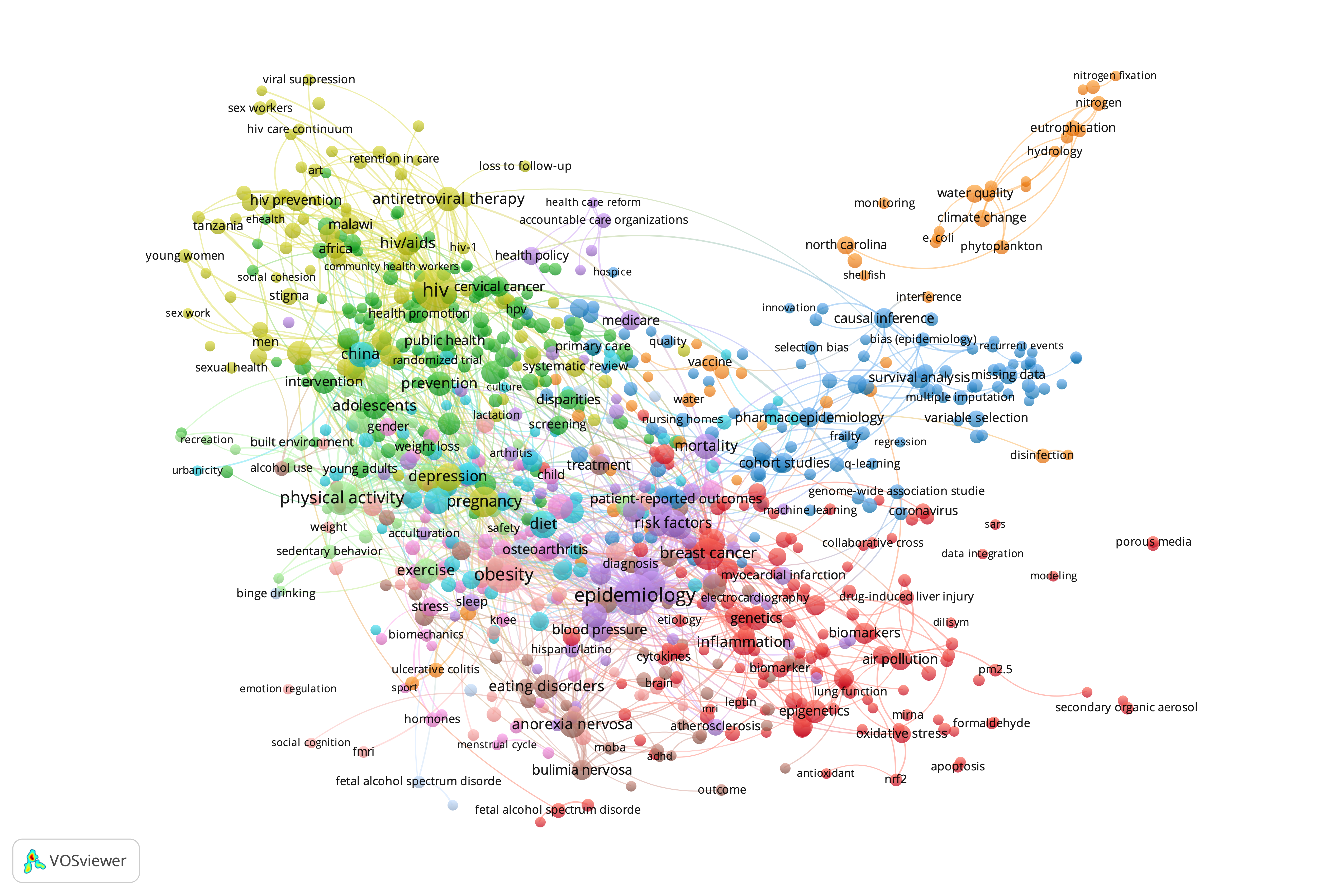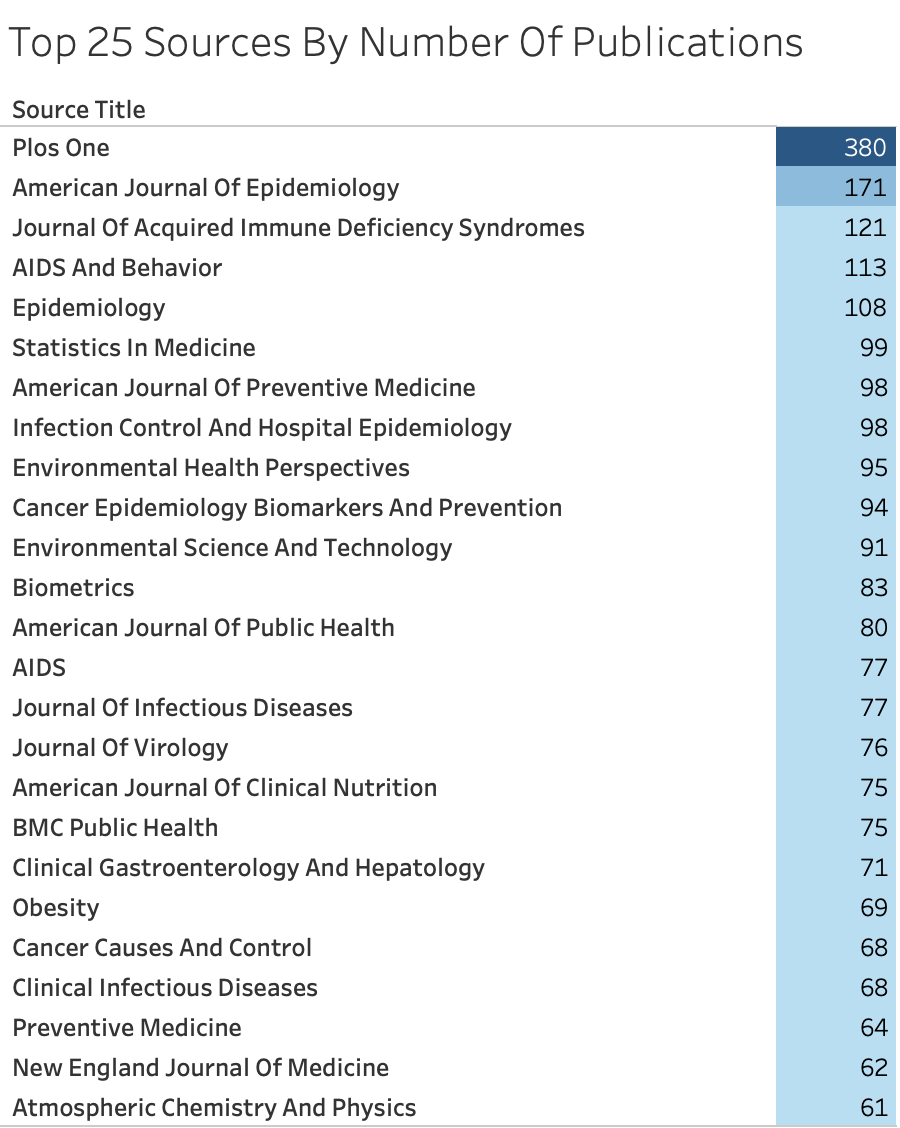The Health Sciences Library (HSL) has partnered with administration at UNC’s Gillings School of Global Public Health (SPH) on a series of projects to reveal collaboration patterns of research faculty, illustrate evolution in research foci over time, and demonstrate SPH impact.
One major project was to investigate and present the entirety of research publications from SPH research faculty over the course of a ten-year period. This analysis presented results by department and culminated in a comprehensive analysis combining output across SPH.
The goal of the project was to inform the following questions:
- What is SPH’s research output over the past 10 years?
- Which individuals within SPH have been involved in research efforts?
- With which institutions, organizations, and countries are SPH researchers collaborating?
- What are the various areas of focus being investigated within the research domain?
Dataset
Our team searched Scopus and retrieved articles for 293 SPH faculty members across nine departments. The faculty list was provided by SPH. A total of 14,292 publications were included in the analysis, covering publication years 2010 to 2020. VOSviewer, an open-source bibliometric analysis tool, and Bibliometrix, a programming package written in R, were used to produce author, organization, country, and topic analyses, and to generate visualizations.
Deliverables
For the co-authorship analysis, networks were constructed based on author collaboration. All authors with 12 or more publications were included. Each node in the network map represents a SPH faculty member or one of the paper co-authors. The size of each node represents the number of articles for a given author. Network clusters are based on co-authorship links and are assigned by application algorithms. Proximity of nodes reflects the relational connectivity of any two authors.
For the organization analysis, networks were constructed based on organization collaboration. Council of Education for Public Health (CEPH) Accredited Schools and Programs with one or more publications were included. Each node in the network map represents SPH or one of the collaborating organizations of other authors. The size of each node represents the number of articles for a given organization. Network clusters are based on co-authorship links and are assigned by application algorithms. Proximity of nodes reflects the relational connectivity of any two organizations.
For the topic analysis, we examined commonly occurring terms from titles and abstracts. Terms were normalized to address variation in singular/plural forms and acronyms/full terms. Commonly occurring terms related to study methods were also removed based on input received from representatives of SPH administration and faculty. After all terms were compiled, a term threshold of 50 or more occurrences was applied to restrict the number of terms included in the visualization.
Results
The team completed author collaboration and topic analyses for SPH’s eight academic departments and prepared an interactive dashboard of research topics across these departments. These analyses have been used by SPH in a number of ways, including program planning, grant submissions, and other external communications.





